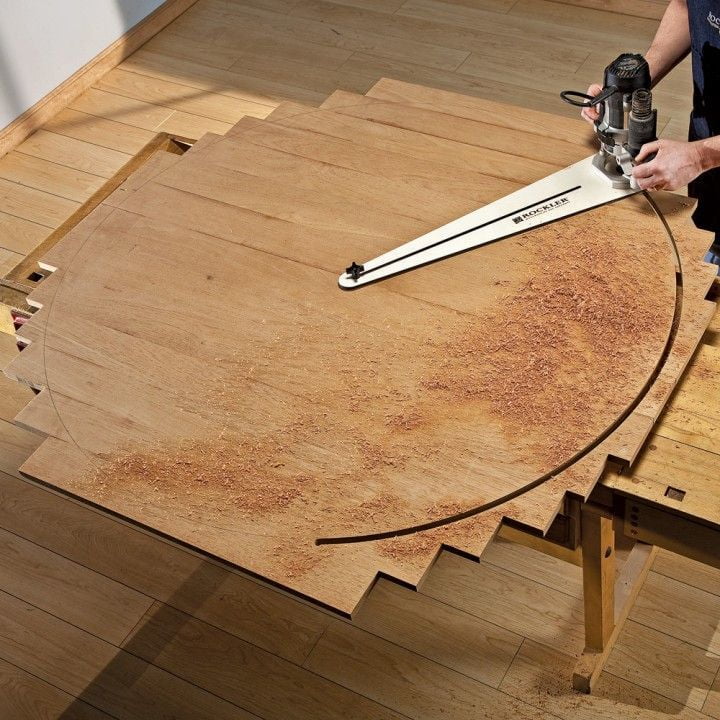Are you wondering how to fill nail holes in woodwork for a seamless finish? Filling nail holes is an essential step in any woodworking project, whether it’s for furniture, trim, or other wooden surfaces. In this guide, we will explore the importance of filling nail holes and provide a comprehensive overview of the tools, materials, and techniques needed to achieve professional results.
When working with wood, especially when creating intricate designs or finishing pieces, it’s crucial to pay attention to the small details. Nail holes can detract from the overall appearance of the woodwork if left unfilled. Whether you’re a seasoned carpenter or a DIY enthusiast, understanding the process of filling nail holes is essential for achieving a flawless finish.
In the following sections, we will discuss the tools and materials needed for this task, as well as provide tips on preparing the surface for filling nail holes. We will also delve into the different types of wood filler available and explore how to choose the right one for your specific project.
Additionally, we will provide step-by-step instructions on how to properly fill and finish nail holes in woodwork for a smooth and polished look. Whether you’re working on a small repair or a larger woodworking project, this guide will equip you with the knowledge and techniques needed to achieve professional results.
Tools and Materials Needed
Filling nail holes in woodwork is a task that requires the right tools and materials to achieve a professional finish. Before you begin, it’s important to gather all the necessary items. You will need a putty knife, sandpaper, wood filler, a clean cloth, and paint or stain for finishing. These basic tools and materials will ensure that you have everything you need to properly fill and finish nail holes in your woodwork.
In addition to these basic items, there are also specialized tools that can make the job easier. For example, if you are working with larger nail holes or gouges, consider using a two-part epoxy wood filler for extra strength and durability.
A small trowel or spatula may also be helpful for applying filler to larger areas. It’s important to assess the size and depth of the nail holes in your woodwork to determine which tools and materials will work best for your specific project.
Once you have gathered all the necessary tools and materials, it’s important to set up a clean and organized workspace. Lay down a drop cloth to protect your floors or work surface from any spills or drips. Having all your tools and materials within easy reach will help streamline the process of filling nail holes in your woodwork.
| Tools | Materials |
|---|---|
| Putty knife | Wood filler |
| Sandpaper | Clean cloth |
| Trowel/spatula (for larger holes) | Paint or stain for finishing |
Preparing the Surface
When it comes to filling nail holes in woodwork, proper preparation is key to achieving a flawless finish. Before you can begin filling the holes, it’s essential to prepare the surface of the woodwork to ensure that the filler adheres properly and seamlessly blends with the surrounding area. Follow these steps to properly prepare the surface for filling nail holes in woodwork:
1. Clean the Surface: Start by thoroughly cleaning the area around the nail holes. Use a mild detergent or wood cleaner and a soft cloth to remove any dust, dirt, or debris from the surface of the woodwork. This will ensure that the filler adheres properly and achieves a seamless finish.
2. Sand the Area: After cleaning the surface, use fine-grit sandpaper to lightly sand the area around the nail holes. This will roughen up the surface slightly, allowing the filler to adhere better. Be sure to sand in the direction of the grain to avoid leaving visible scratches on the wood.
3. Remove Dust: Once you have sanded the area, use a clean, dry cloth or a tack cloth to remove any dust or debris left behind by sanding. It’s important to make sure that the surface is completely clean before applying any filler.
By properly preparing the surface of your woodwork before filling nail holes, you can ensure that your filler adheres seamlessly and provides a professional-looking result. Taking the time to clean, sand, and remove dust will set you up for success when it comes to achieving a flawless finish.
For more tips and tricks on how to fill nail holes in woodwork, check out our comprehensive guide on achieving professional results every time.
Choosing the Right Filler
When it comes to filling nail holes in woodwork, choosing the right filler is crucial for achieving a seamless and polished finish. There are various types of wood fillers available, each with its own unique properties and uses. Understanding the different options will help you select the most suitable filler for your specific project.
Here are some common types of wood fillers and their uses:
- Wood Putty: This type of filler is perfect for smaller nail holes and minor surface imperfections. It is easy to work with and can be stained or painted to match the surrounding woodwork.
- Epoxy Filler: Ideal for larger nail holes or deep gouges, epoxy fillers are durable and long-lasting. They can be sanded, painted, or stained once hardened, making them a versatile choice for more extensive repairs.
- Spackling Compound: Often used for interior woodwork, spackling compound dries quickly and can be easily sanded to achieve a smooth finish. It is best suited for filling small to medium-sized nail holes.
When choosing a wood filler, consider the size and depth of the nail holes, as well as the location of the woodwork. Additionally, take into account whether the filled areas will be exposed or hidden, as this will determine the level of finishing required.
Understanding the different types of wood fillers available and their respective uses is essential in achieving professional results when filling nail holes in woodwork. By selecting the right filler for your specific needs, you can ensure a flawless finish that enhances the overall appearance of your woodworking projects. Whether it’s small touch-ups or more extensive repairs, choosing the appropriate filler is an important step in achieving a polished look.
Filling Nail Holes
Step 1: Clean the Surface
Before filling nail holes, it is important to ensure that the surface is clean and free of any debris. Use a clean, dry cloth to wipe off any dust or dirt from the area around the nail holes. This will help the filler adhere better and provide a smoother finish.
Step 2: Apply the Filler
Choose a suitable wood filler based on the type of wood and the size of the nail holes. Using a putty knife or a similar tool, apply the filler generously into each nail hole, ensuring that it slightly overfills the hole. Press down firmly to pack the filler into the hole and remove any excess with the putty knife.
Step 3: Let It Dry and Sand
Allow the filler to dry completely according to the manufacturer’s instructions. Once dried, use fine-grit sandpaper to gently sand down the filled areas until they are smooth and flush with the surface of the woodwork. Be careful not to sand too aggressively, as this can damage surrounding areas.
By following these steps, you can effectively fill nail holes in woodwork and achieve a professional-looking result. It is important to take your time and pay attention to detail in order to ensure a flawless finish that seamlessly blends with the rest of your woodwork.
Sanding and Finishing
Once you have filled the nail holes in your woodwork, it’s essential to sand and finish the surface to achieve a smooth and polished look. Start by allowing the filler to dry completely according to the manufacturer’s instructions.
This typically takes 24 hours, but it’s best to check the product label for specific drying times. Once the filler is dry, use a fine-grit sandpaper, around 220-grit, to sand down the filled nail holes until they are flush with the surface of the wood.
When sanding, be sure to work in the direction of the wood grain to avoid causing any scratches or imperfections on the surface. It’s important to be gentle while sanding so as not to remove too much filler or damage the surrounding wood. After sanding down the filled nail holes, wipe away any dust or debris with a clean, damp cloth before moving on to the finishing steps.
Next, apply a wood finish or paint that matches the rest of the woodwork for a seamless look. If you’re working with stained wood, choose a stainable wood filler that will blend in with the surrounding area when stained. For painted surfaces, select a paintable wood filler that will accept paint evenly. Once applied and dried according to product instructions, gently sand again if necessary before applying a clear coat or varnish for added protection.
Remember that proper sanding and finishing are crucial for achieving professional-looking results when filling nail holes in woodwork. Take your time and pay attention to detail during these steps for a flawless finish that seamlessly blends into your existing woodwork.
| Woodworking Step | Description |
|---|---|
| Allow filler to dry | Check manufacturer’s instructions for drying time |
| Sand filled nail holes | Use fine-grit sandpaper in direction of grain |
| Apply finish or paint | Select appropriate finish based on surrounding area type |
Tips and Tricks
Properly Matching the Wood Filler
When filling nail holes in woodwork, it is important to carefully select a wood filler that closely matches the color and grain of the wood. This will ensure that the filled nail holes blend seamlessly with the surrounding wood, creating a polished and professional finish. When in doubt, it is best to choose a wood filler that is slightly lighter than the wood, as it can always be darkened with stain or paint if needed.
Using the Right Application Technique
Applying the wood filler properly is crucial for achieving a professional-looking result. Whether using a putty knife or your finger, make sure to press the filler firmly into the nail hole, ensuring it is completely filled. After applying the filler, scrape off any excess material using a putty knife to create a smooth surface. It is important to work patiently and methodically to avoid air bubbles or uneven patches.
Blending and Finishing Techniques
Once the nail holes are filled and excess filler removed, it’s time to blend and finish the surface for a seamless look. Using fine-grit sandpaper, gently sand over the filled nail holes in the direction of the grain until they are flush with the surrounding surface.
For an extra smooth finish, lightly dampen a cloth with water and wipe over the area before allowing it to dry completely. This will help remove any remaining dust particles before applying paint or stain.
By following these expert tips and tricks for filling nail holes in woodwork, you can achieve a flawless result that enhances the overall appearance of your wood surfaces. Taking care to properly match fillers, use precise application techniques, and employ effective blending and finishing methods will ensure that your woodwork looks professionally finished for years to come.
Maintenance and Care
After successfully filling nail holes in woodwork, it is important to understand how to maintain and care for the filled areas over time. Proper maintenance and care will ensure that the filled nail holes remain in good condition, preserving the overall appearance of the woodwork. Here are some helpful tips on maintaining and caring for filled nail holes in woodwork.
Firstly, it is essential to regularly inspect the filled nail holes to ensure that they are still intact and in good condition. Over time, the wood may expand or contract due to changes in temperature and humidity, which can affect the filled nail holes. By inspecting the filled areas regularly, any signs of deterioration or damage can be addressed promptly.
Additionally, it is recommended to apply a protective finish over the filled nail holes to provide extra durability and protection. A clear sealant or wood finish can help prevent moisture from seeping into the filled areas, as well as protect them from scratches and wear. This will help maintain the appearance of the filled nail holes and ensure that they blend seamlessly with the rest of the woodwork.
Lastly, proper cleaning and dusting of the woodwork can contribute to maintaining the filled nail holes. Keeping dust and dirt away from the filled areas will prevent them from becoming discolored or deteriorating over time. Regularly dusting and cleaning the woodwork will help preserve the appearance of the filled nail holes for years to come.
By following these maintenance and care tips, you can ensure that your filled nail holes in woodwork remain in excellent condition, contributing to a polished and flawless finish for your woodworking projects. Taking proactive measures to maintain and care for these filled areas will prolong their longevity and contribute to the overall aesthetics of your woodworking projects.
Conclusion
In conclusion, filling nail holes in woodwork is an essential step in achieving a flawless and polished finish. Not only does it improve the overall appearance of the woodwork, but it also helps prevent any potential damage or deterioration caused by unfilled nail holes. By following the proper steps and using the right tools and materials, anyone can effectively fill nail holes in woodwork and achieve professional-looking results.
It is important to emphasize the significance of preparing the surface properly before filling nail holes. This ensures that the filler adheres well to the wood and provides a seamless finish. Additionally, choosing the right type of filler based on the specific needs of the project is crucial for a successful outcome. Whether it is a water-based filler for small nail holes or an epoxy filler for larger voids, selecting the appropriate product will greatly impact the final result.
Lastly, sanding and finishing the filled nail holes are equally important for achieving a smooth and polished look. Taking the time to properly sand down any excess filler and apply a suitable finish ultimately contributes to a flawless appearance.
By following these steps and incorporating expert tips and tricks for best practices, individuals can maintain and care for their filled nail holes over time, ensuring long-lasting results that enhance any woodworking project. Overall, filling nail holes in woodwork is an integral part of achieving a professional finish and should not be overlooked in any woodworking endeavor.

Hi everyone! I’m a woodworker and blogger, and this is my woodworking blog. In my blog, I share tips and tricks for woodworkers of all skill levels, as well as project ideas that you can try yourself.





